Table of Contents
Welcome to this comprehensive guide to weight bearing exercises for osteoporosis. If you want to learn more about this type of exercise, you are in the right place.
Weight bearing exercise is essential for anyone with osteoporosis, osteopenia, or low bone density. It is a major component of a safe and effective osteoporosis exercise program.
But how do you determine which weight bearing exercise is right for you? This guide answers that question and more. The guide will:
- Define weight bearing exercises.
- Describe the effect that non-weight bearing exercises have on our bones.
- Explain why weight bearing is important for preventing and treating osteoporosis.
- Describe how to choose the right weight-bearing exercises for your osteoporosis exercise program.

What is Weight Bearing Exercise?
A weight bearing exercise is any exercise or activity that meets these three conditions:
- One or several of your limbs make contact with a stable surface.
- It places weight through a limb.
- A gravitational field is present. (This is why Earth is a good location to exercise and not space.)
These conditions create a force. In physics, biomechanics, and rehabilitation, we have a special name for this force. We refer to it as the “ground reaction force” (GRF). In other words, the ground reacts with its own force when we bear weight.
Do You Need Weights for Weight Bearing Exercise?
Many people think that a weight bearing exercise requires weights. Not so. You do not need weights to do weight bearing exercises.
This is a source of confusion. In fact, many people confuse weight bearing exercise with strength training exercise. More on that later.
Before we go further, we need to explore the physics behind weight bearing.
The Physics of Weight Bearing Exercises for Osteoporosis
When you stand motionless, you exert a contact force with the ground. In this case, you exert 50% of your weight on each leg.
The ground reacts and exerts it’s own equal and opposite force. (3) This is the “reaction” in the term “ground reaction force.” It derives from Newton’s third law. This law states that:
“If a force, called action, acts upon a body, then an equal and opposite force, called reaction, must act upon another body.” (Source: Wikipedia.)
The force exerted by the ground is the reaction (to your action).
The distinction between action and reaction is completely arbitrary. The expression “ground action” would be, in principle, acceptable. (1)
Impact, Ground Reaction Forces, and Weight Bearing Exercise
As you walk, the bones and muscles in your body interact with the ground. The ground reaction forces (GRF) drive up through your feet as they make contact with the ground. The harder the impact, the greater the GRF.
Numerous studies over the years measured the GRF created by different activities from Hatha Yoga (2) to Aerobic Dancing and bench Step Aerobics. (3,4) Others have compared high impact to low impact (5) while other have measured the GRF in different types of high-impact exercise. (6)
The effectiveness of exercise intervention largely centres around the measurement of bone density using dual energy x-ray absorptiometry (DEXA). Researchers recognize that some changes in the shape and strength of bones may be undetected by DEXA (7) and that a low or high BMD does not necessarily mean that bones are weak and prone to fracture or strong and healthy. (2,7)
Muscular Response and Weight Bearing Exercise
The second component of weight bearing exercise is the muscular response. This muscular contraction stops you from collapsing.
Ground reaction forces and muscle contraction work together to stimulate bone cells.
What is the Purpose of Weight Bearing Exercise?
The purpose of weight bearing exercise is to strengthen your bones and muscles. The more intense the weight bearing, the stronger your bones and muscles become.
To gain a better understanding of intensity, let’s compare slow walking to running. Slow walking and running involve ground reaction forces (GRF). Both take you into a forward movement and cause your body to stop you from falling.
Running involves greater GRF than slow walking. (4) Why? Because the faster you move, the greater the forces you have to overcome to maintain your balance.
Slow walking is still valuable. But you need to increase your pace. The more consistent you are, the easier it is to build up your walking pace. Fast walking will stimulate your bones or at least reduce your rate of bone loss.
How Does Weight Bearing Exercise Help Osteoporosis?
Your bones are unique compared to other organs. They are able to repair and rejuvenate themselves to combat decline. Most organs can’t do this.
Cells responsible for resorption and the formation of bone remain through adulthood. The resorption cells are osteoclasts, and the formation cells are osteoblasts. Their function and quantity diminish as you age.
Mesenchymal stem cells (MSC) are cells predestined to become bones, muscles, and ligaments. (8)
Every day, we produce mesenchymal stem cells in our bone marrow. Their nourishment is mechanical stimulation.
Vibrating muscles stimulate stem-cells into action to create bone, muscle, and ligament cells. Weight-bearing exercise and strength training cause our muscles to vibrate.
The vibration stimulates our mesenchymal stem cells. They become bone cells, not fat cells. (9)
Keep this important fact in mind when doing weight bearing exercises. Ground reaction forces and muscle responses create vibrations that talk to your bones. They respond and create stronger bones.
Weight Bearing Therapy in Medicine
This section covers the evolution of weight bearing exercise in rehabilitation medicine. You don’t have to read this section. But you will get a better understanding of weight bearing and how it has evolved as a treatment therapy.
I started my Physical Therapy career forty years ago. The medical community then believed that too much weight-bearing could delay fracture healing. They thought that it could worsen bone trauma. (10,11)
Medical professionals discouraged weight-bearing exercises and activities for people with a fracture. This extended to people at risk of fracture, including individuals with osteoporosis.
Things have progressed since then. The medical community learned that weight-bearing is beneficial for bone health. They found:
- The right weight bearing exercises for osteoporosis can promote healing and help build bone.
- Consistent, progressive weight bearing exercise can slow down bone loss and osteoporosis.
Patients get excited when I tell them this. This is good news!
Weight Bearing Exercise in Rehabilitation Settings
Earlier, I stated that weight bearing exercise is beneficial for individuals with osteoporosis. It can slow bone loss.
Things are different for people who have had a fracture or joint replacement surgery. They have to do orthopaedic rehabilitation to recover from surgery.
The orthopaedic Physical Therapist has to be aware of ground reaction forces. They consider the impact of GRF on healing after a fracture or surgery.
Standing motionless after a fracture can create too much force.
Non-Weight Bearing Prescription
An orthopeadic surgeon may recommend a period of non-weight bearing after a fracture. You have seen people on crutches with one leg in a cast lifted off the ground or supported in a wheelchair. This is a non-weight bearing activity.
As the bone begins to heal, the individual will introduce the limb to more weight-bearing or GRFs.
A patient can take a gradual approach to full weight-bearing. This includes:
- Feather weight bearing.
- Partial weight bearing.
- Moderate weight bearing.
The Effects of Non Weight Bearing Exercises on Bone and Muscle
Bone density and quality can both decline if you do not do enough weight-bearing activity. When astronauts are in space, they can lose 0.5 – 1.5% of their bone mass per month. (12) In space, bone loss occurs because the forces of gravity are gone.
In the same way, extended bed rest will reduce your bone density and bone quality. So will spending hours of your day in zero-gravity recliners and beds!
Why does this loss happen?
Astronauts, while in space, are not subject to the earth’s gravitational field. They do not load their bones.
The same is true for someone on extended bed rest or who leans against the back of a recliner. They are not loading their bones and muscles.
The adage “use it or lose it” applies here. If you do not bear weight through your bones and challenge your muscles, they deteriorate.
How to Choose Weight Bearing Exercises for Osteoporosis
Consider these five factors when choosing weight bearing exercises for osteoporosis:
- Your age.
- Medical history.
- Past and current activity level.
- Your fracture risk.
- How much you enjoy the activity or exercise.
I encourage people to choose activities and exercises that they enjoy doing. If you do not like the activity, it is unlikely that you will stick with it over time.
This is important. Regular weight bearing exercise boosts your bone, cardiovascular, and mental health. A sedentary lifestyle will harm more than your bone health.
In my book, Exercise for Better Bones, I help you choose the right weight bearing exercises for you. This article provides more general guidelines. Let’s start with individuals recovering from a fragility fracture or surgery.
Recovering From a Surgery or Fragility Fracture
During the 1980s and 1990s, I worked on a surgical ward. We kept people in bed for a period of time after their hip or knee replacement.
Things have changed. We learned that weight-bearing accelerates the healing process. Today, medical professionals get people moving as soon as possible. They choose the appropriate amount of weight-bearing exercise for the patient.
My advice: Listen to your surgeon or doctor after a fracture or any type of sprain or strain. Follow the weight bearing recommendations of your surgeon or doctor.
The amount of weight bearing you do will help (or hinder) the healing process. Too much can hurt, and too little can delay healing.
Weight Bearing Exercises for Osteoporosis and Osteopenia Recommendations
Choose exercises that challenge your bones. But choose ones appropriate for your fracture risk level. Inappropriate weight bearing exercises could increase your risk of fracture.
- Running, jumping, and hopping are appropriate if you are at low-risk of fracture.
- Do brisk walking, hiking, and stair-climbing if you are at moderate-risk of fracture.
- A person with a high-fracture risk needs to be more cautious. Choose exercises such as Nordic walking, Tai Chi, aquafit, or walking at a moderate pace.
Exercise for Better Bones
My book, Exercise for Better Bones, has a comprehensive list of weight bearing exercises for osteoporosis. Fracture risk plays a major role in the choice of weight bearing exercise. The book helps you make that choice.
Weight Bearing Aerobics Videos
Aerobic workouts are ideal weight bearing exercises. But they must be safe.
I have a series of weight-bearing aerobic workout videos that are effective and safe. All the moves in the routines take your bone health into consideration.
My streaming video series, Weight Bearing Aerobic Workouts for Osteoporosis, is ideal for people who want a safe and effective way to build bone.
- The Beginner level aerobic workout is appropriate for everyone. You can have a low, moderate, or high-risk of fracture.
- The Active level is appropriate for someone at a low or moderate-risk of fracture.
- The Athletic level is appropriate for someone at low-risk of fracture.
Weight Bearing Exercises for Osteoporosis and Strength Training
Some exercises can be both weight bearing and strength training exercises.
Upper Body Weight Bearing Exercises
Push-ups and planks are examples of upper body weight bearing exercises. They also build strength.
Lower Body Weight Bearing Exercises
Step-ups, dynamic lunges, and squat jumps are examples of lower body weight bearing exercises. They also promote strength building.
How to Adjust Weight Bearing Exercises to Include Strength Training
Many weight bearing exercises can incorporate strength training. I encourage you to increase the strength demands on your muscles and bones when you do the exercise. But be sure to be safe!
The push-up is a great example of a modifiable weight bearing exercise for the upper body. One modification is to use different surfaces for either explosive or slow push ups.
- The wall push-up is the least effortful, with the least amount of GRF.
- The ground push-up is the most effortful, with the most ground reaction forces acting on your body
An explosive push-up is to the upper body what jumping is to the lower body. It increases the GRF.
A plank is a stationary push up. It is a weight bearing exercise for your hands, wrists, and arms. But requires much less muscle strength than a push-up.
I encourage you to incorporate both lower and upper body weight bearing exercises. This will keep all your bones more resilient and able to hold your body weight.
Weight Bearing Exercises for Osteoporosis Video Workouts
Weight bearing exercise is an essential component of an osteoporosis exercise program.But where can you find a weight bearing exercise workout that is both safe and effective for individuals concerned with osteoporosis, osteopenia or low bone density?
I created these easy-to-follow weight bearing video workouts for you. They are progressive (Beginner, Active and Athletic) and stream, ad free, from my website. Enjoy!
How Does Strength Training Help Weight Bearing?
Weight bearing is one form of exercise that helps the formation of bone cells. The other is strength training.
Together, they work hand in hand. Strengthening your entire body helps you walk faster. I have never seen an Olympic sprinter with skinny arms! The force and speed generated in the upper body help propel the lower body.
When you are stronger, you are able to react and catch yourself if you lose your balance and fall. Life is much easier when you are stronger. You can lift things that you could not lift in the past and move better.
Weight Bearing Exercise: Benefits Beyond Bone Health
Weight bearing activities are also great for cardiovascular health and mental health.
Weight Bearing Exercise for Cardiovascular Health
Weight bearing activities, such as dancing, jogging, and hiking, increase oxygen-flow to our muscles. Our bodies adjust when we increase the intensity of our weight bearing exercise.
This creates a more efficient cardiovascular system. You’ll notice a slower heart rate at rest and during exercise. Most people find that their breathing is less laboured when climbing a hill or flight of stairs.
Another bonus of cardiovascular exercise is lower blood pressure.
Many organizations advocate regular aerobic exercise for adults. The following organizations provide specific recommendations for adults:
- The American College of Sports Medicine
- Center for Disease Control
They recommend healthy adults, under 65 years of age:
- Do 30 minutes of moderate intensity activity per session.
- Perform up to five sessions per week.
If you find that 30 minute sessions are too long or that five sessions per week are too much, you can do the following:
- At least 20 minutes of vigorous intensity activity per session.
- Increase your heart rate and breathing rate compared to the first workout option.
- Perform at least three sessions per week.
You can reduce the risk of heart attacks and strokes if you meet or exceed these recommendations.
Start at a slow pace. Build up over time. Join a group or invite a friend to keep you accountable and to help with the next benefit, your mental health.
Weight Bearing Exercise for Mental Health
An American study demonstrated that physical activity reduced common mental health symptoms. (13) The study lasted five years. Physical activity reduced stress, depression, and emotional concerns by 40%.
A more recent study, involving almost 50,000 adults aged 60 years or older found the more time spent in sedentary behaviours was significantly associated with higher incidence of all-cause dementia. (14) Better get moving while you can still remember to do so.
Most of the physical activities, except cycling, were weight bearing exercises. They are either group or team activities.
Yoga (2) and Tai Chi (15) delivered more mental health benefits than walking. But they are weak forms of weight bearing.
Safest Way to Start Weight Bearing Exercises for Osteoporosis
The Journal of Brazilian Physical Therapy published a paper in 2019. (16) The research team studied weight bearing exercise and how to reduce the risk of injury.
It recommends that sedentary people or those with functional impairments perform:
- Lower limb muscle strengthening
- Core stability training.
They should do this before attempting weight bearing impact exercises.
Contraindications
Contraindications may exist for weight bearing impact exercises. This applies to people with:
- Severe osteoporosis,
- A recent history of fracture or
- Other co-morbidities such as pain from osteoarthritis.
Keep in mind that your fracture risk influences your choice of weight bearing exercise.
Activity Level
Your activity level matters too.
Speak to your doctor before starting any exercise program. This is essential if you have not exercised in months or years. The same applies if you are recovering from an illness or injury.
I encourage every patient diagnosed with osteoporosis to:
- Do some safe form of weight bearing and strength training exercise every day.
- Work on your balance and posture as well.
Are You Ready to Do Weight Bearing Exercises for Osteoporosis?
When you plan to incorporate exercise into your life, take stock of where you are starting. Ask yourself:
- Do I have medical clearance to start a weight bearing aerobic exercise program?
- What weight bearing exercises do I enjoy doing?
- What type of weight bearing exercise have I done over the last three days?
- How many times have you gone out to get your mail or to the corner store?
- How many stairs did you ascend and descend in the course of a day?
- Did you go walking? If so, how often, how far, and how fast?
Be realistic and honest with yourself. I encourage you to look at my video on setting goals. There’s no better time to start than the present.
Examples of Weight Bearing Exercises for Osteoporosis
There are many weight bearing exercises and activities to choose from. Fracture risk, activity level, and medical history determine your weight bearing exercises. I encourage you to use my book, Exercise for Better Bones, as a resource to choose the right exercises for you.
Weight Bearing Exercises at Home
Many of the weight bearing exercises in this guide do not need special equipment. You can do squats, stair climbing (in your home or apartment building), jumping, and stomping at home.
Another option is to follow an online aerobic weight bearing workout. Make sure that the instructor has designed the workout with bone health in mind.
If you want to have peace of mind, I offer many aerobic weight-bearing workouts you can do in the comfort of your home.
Weight Bearing Exercises for Hips
Many people have low bone density in their hips. They ask if I can recommend weight-bearing exercises targeted at the hip area.
Recall that weight bearing exercise creates ground action forces. These ground action forces travel up your leg to the hip joints. As you move, your muscles vibrate. The combination of ground reaction forces and muscle vibration stimulates the hip bone.
The type of weight bearing activity determines the amount of bone stimulation. The chart below shows the peak vertical ground reaction force by activity. The more intense the activity, the greater the peak vertical ground reaction force.
A couple of important tips before you select a weight bearing exercise for your hips:
- Consider your fracture risk before choosing a weight bearing exercise.
- When you’re getting started, consistency is more important than intensity.

Weight Bearing Exercises for Spine
The spine is one of the first areas where bone loss leads to osteoporosis. Compression fractures are common.
Clients often ask what weight bearing exercises are best for the spine.
Weight bearing exercises, including hiking, walking, running, and dancing, generate ground reaction forces. But, do these activities provide enough ground action force to reach the spine? A 2002 meta-analysis looked into this question.
The research team looked at thirteen studies. The studies reported bone mineral density scores in the spine. They compared the bone mineral densities of the control groups with exercise groups.
The spine scores of the exercise groups were higher than those of the control groups. This shows that your spine benefits from weight bearing exercise. (17)
Is Walking a Weight Bearing Exercise?
Walking is a weight bearing exercise. This is good news for many people since walking is their principal source of exercise. But not all walking qualifies as weight bearing exercise for osteoporosis. I cover the requirements in this blog post on walking as a weight bearing exercise.
Is Cycling a Weight Bearing Exercise?
Cycling is not a weight bearing exercise for osteoporosis. It does not provide enough ground forces to improve your bone health. I explain why in my blog post on cycling and weight bearing exercise.
Is Running a Weight Bearing Exercise?
Running is consider weight bearing. I explain further in my video.
Is Yoga a Weight Bearing Exercise?
Yoga is not a weight bearing exercise for osteoporosis. It does not provide enough ground forces to improve your bone health.
Is Swimming a Weight Bearing Exercise?
Swimming is not a weight bearing exercise for osteoporosis. The water almost acts as a gravity free environment. It is not a good choice for improving your bone health.
Is Pilates a Weight Bearing Exercise?
Pilates is not a weight bearing exercise for osteoporosis. It does not provide enough ground forces to improve your bone health.
Is Rowing a Weight Bearing Exercise?
Rowing is not a weight bearing exercise. It does not provide any ground forces to improve your bone health and on top of this the repeated motion brings your spine into flexion. Thereby increasing your risk for wedge compression fractures.
Is Cross-Country Skiing a Weight Bearing Exercise?
Cross-country skiing is a great cardiovascular activity. It is weight bearing however, the ground reaction forces are very low. Having worked with several individuals who have sustained fractures, the risks outweigh the benefits if you have a moderate or high fracture risk. It does not provide enough ground forces to improve your bone health.
Is Tai Chi a Weight Bearing Exercise?
I encourage clients to practice Tai Chi. Benefits include improved balance and body awareness. Unfortunately, Tai Chi does not affect bone density.
A study published in 2017 concluded:
“Tai Chi exhibits no significant role in attenuating bone mineral density (BMD) loss. The results apply to the lumbar spine and femoral neck in postmenopausal women.” (18)
Are Planks a Weight Bearing Exercise?
Planks are a weight bearing exercise for osteoporosis. Ground forces come through the hands, feet, knees, or forearms in a plank pose. The ground forces stimulate bone formation in these areas.
Are Push Ups a Weight Bearing Exercise?
Push ups are a weight bearing exercise for osteoporosis. Ground forces come through the hands, feet, knees, or forearms in a push up pose. The ground forces stimulate bone formation in these areas.
Are Squats a Weight Bearing Exercise?
Squats are a weight bearing exercise for osteoporosis. When you do a squat, ground forces come through your feet and legs and stimulate bone formation.
Benefits of Weight Bearing Exercises for Osteoporosis
Weight bearing exercise has many benefits. Let me list them here:
- Stimulate the creation of bone formation cells that help you build stronger bones.
- Muscles get stronger.
- The quality of life improves.
- Your confidence improves as you get stronger.
Conclusion
This guide provides a comprehensive overview of weight bearing exercises for osteoporosis. This type of exercise improves bone strength, cardiovascular fitness, mental health, and quality of life.
Choose activities that are enjoyable and accessible throughout the year. This will ensure you make the gains you need. You lose the benefits of weight bearing exercise if you are not consistent. (16,19)
Recommended Posts
References
Wikipedia, Ground Reaction Force <https://en.wikipedia.org/wiki/Ground_reaction_force> Last viewed October 13, 2023
Wilcox SJ, Hager R, Lockhart B, Seeley MK. Ground Reaction Forces Generated by Twenty-eight Hatha Yoga Postures. Int J Exerc Sci. 2012 Apr 15;5(2):114-126. PMID: 27182380; PMCID: PMC4738971.
Rousanoglou EN, Boudolos KD. Ground reaction forces and heart rate profile of aerobic dance instructors during a low and high impact exercise programme. J Sports Med Phys Fitness 45:162-170, 2005
Johnson BF, Rupp JC, Berry SA, Rupp DA. Peak vertical ground reaction forces and time-to-peak force in bench-step aerobics and other activities. Med Sci Sports Exerc 24:S131, 1992.
Grove KA, Londeree BR. Bone density in postmenopausal women: high impact vs low impact exercise. Med Sci Sports Exerc. 1992 Nov;24(11):1190-4.
Kato T, Bassey EJ. Ground reaction force in different types of high-impact exercise. Research Reports of Suzuka University of Medical Science 9:128-135, 2002.
Forwood, M. What does the animal model teach us about the effects of physical activity on growing bone? Pediatric Exercise Science18:282-289, 2006
Somoza RA, Welter JF, Correa D, Caplan AI. Chondrogenic differentiation of mesenchymal stem cells: challenges and unfulfilled expectations. Tissue Eng Part B Rev. 2014 Dec;20(6):596-608. doi: 10.1089/ten.TEB.2013.0771.
Pagnotti GM, Styner M, Uzer G, Patel VS, Wright LE, Ness KK, Guise TA, Rubin J, Rubin CT. Combating osteoporosis and obesity with exercise: leveraging cell mechanosensitivity. Nat Rev Endocrinol. 2019 Jun;15(6):339-355.
Augat P., Merk J., Ignatius A., Margevicius K., Bauer G., Rosenbaum D., Claes L., Early., Full Weightbearing with Flexible Fixation Delays Fracture Healing. Clinical Orthopaedics and Related Research®. 1996 Jul 1; 328:194-202.
Mavčič B., Antolič V., Optimal mechanical environment of the healing bone fracture/osteotomy. International orthopaedics. 2012 Apr 1;36(4):689-95.
Juhl O.J.T., Buettmann E.G., Friedman M.A., DeNapoli R.C., Hoppock G.A., Donahue H.J. Update on the effects of microgravity on the musculoskeletal system. NPJ Microgravity. 2021;7:28.
Chekroud, A.R., et al. Association between Physical exercise and mental health in 1.2 million individuals in the USA between 2011 and 2015: a cross-sectional study. The Lancet Psychiatry, Vol. 5, Issue 9, P739-746, Sept. 2018
Raichlen DA, Aslan DH, Sayre MK, et al. Sedentary Behavior and Incident Dementia Among Older Adults. JAMA. 2023;330(10):934–940.
Sun Z., et al. Effects of tai chi exercise on bone health in perimenopausal and postmenopausal women: a systematic review and meta-analysis. Osteoporosis International. 2016 Oct;27(10):2901-11.
Robin M. Daly, Jack Dalla Via, Rachel L. Duckham, Steve F. Fraser, Eva Wulff Helge. Exercise for the prevention of osteoporosis in postmenopausal women: an evidence-based guide to the optimal prescription. Braz J Phys Ther. 2019 Mar-Apr; 23(2): 170–180.
George A. Kelley, Kristi S. Kelly, Sung Vu Tran, Exercise and Lumbar Spine Bone Mineral density in Postmenopausal Women: A Meta-Analysis of Individual Patient Data. The Journals of Gerontology: Series A, Vol. 57, Issue 9, Sept 2002, Pages M599-M604
Liu F, Wang S. Effect of Tai Chi on bone mineral density in postmenopausal women: A systematic review and meta-analysis of randomized control trials. J Chin Med Assoc. 2017 Dec;80(12):790-795. doi: 10.1016/j.jcma.2016.06.010. Epub 2017 Aug 18. PMID: 28827032.
Korpelainen R., Keinanen-Kiukaanniemi S., Nieminen P., Heikkinen J., Vaananen K., Korpelainen J. Long-term outcomes of exercise: follow-up of a randomized trial in older women with osteopenia. Arch Intern Med. 2010;170(17):1548–1556.
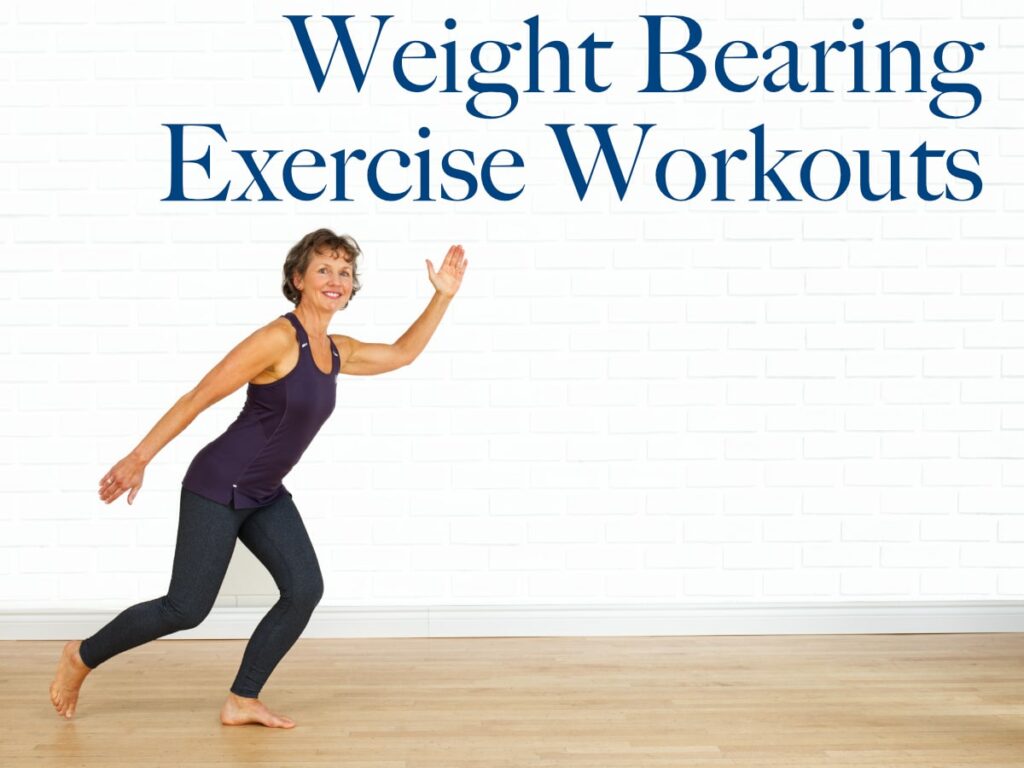
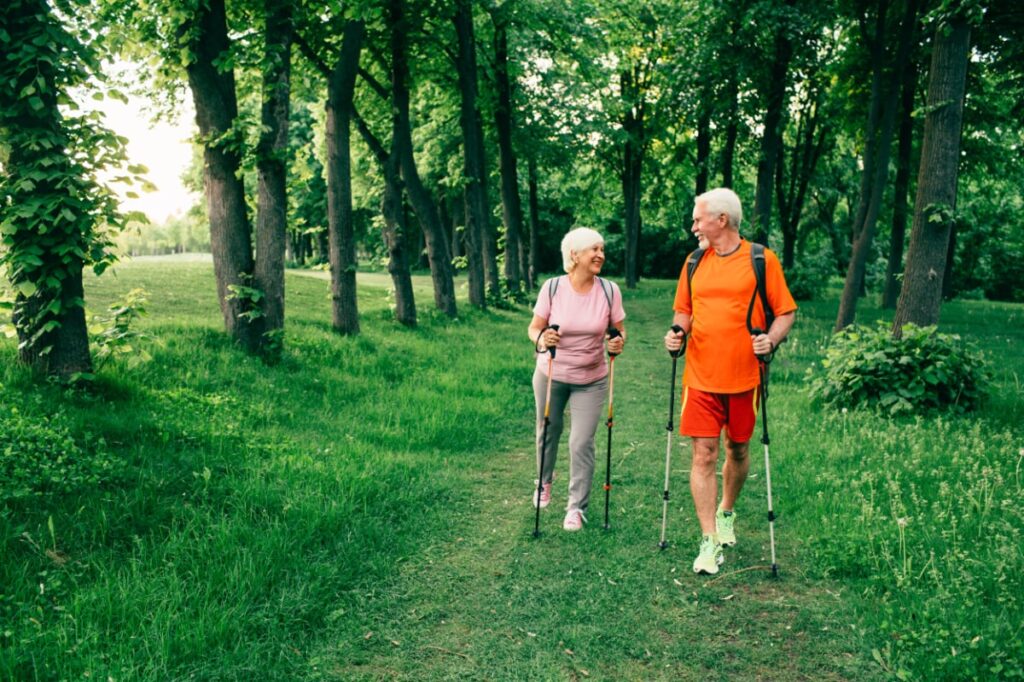
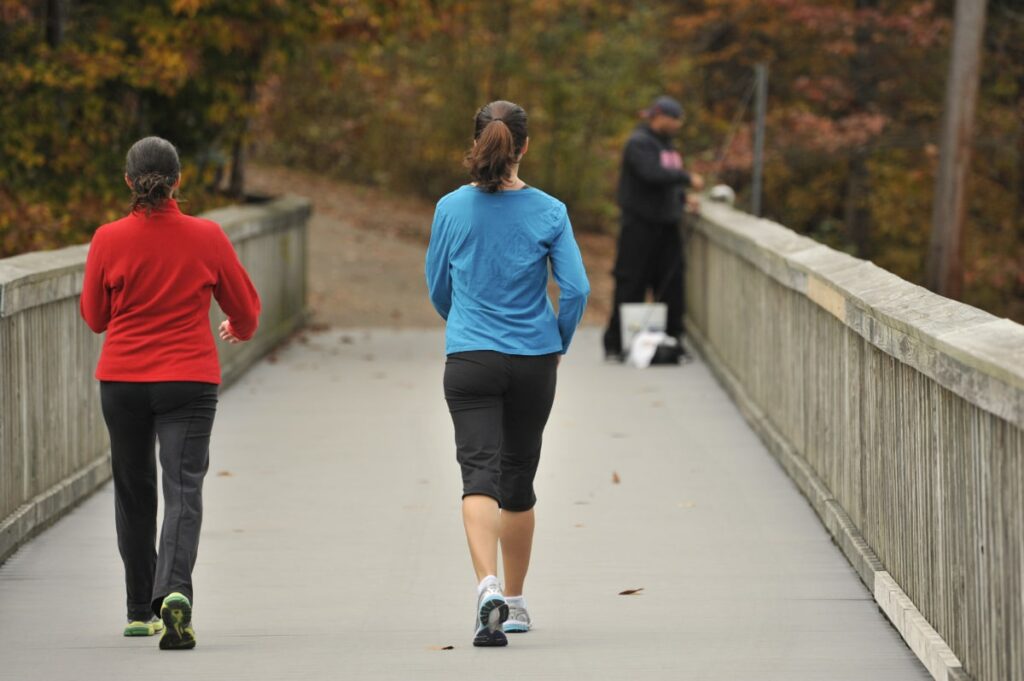

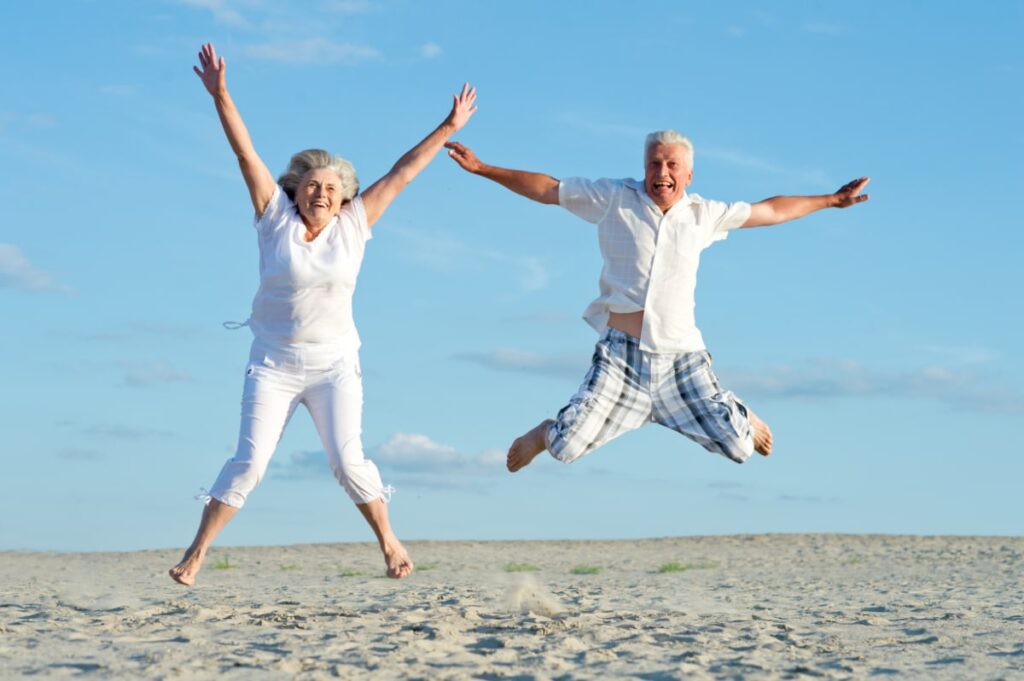

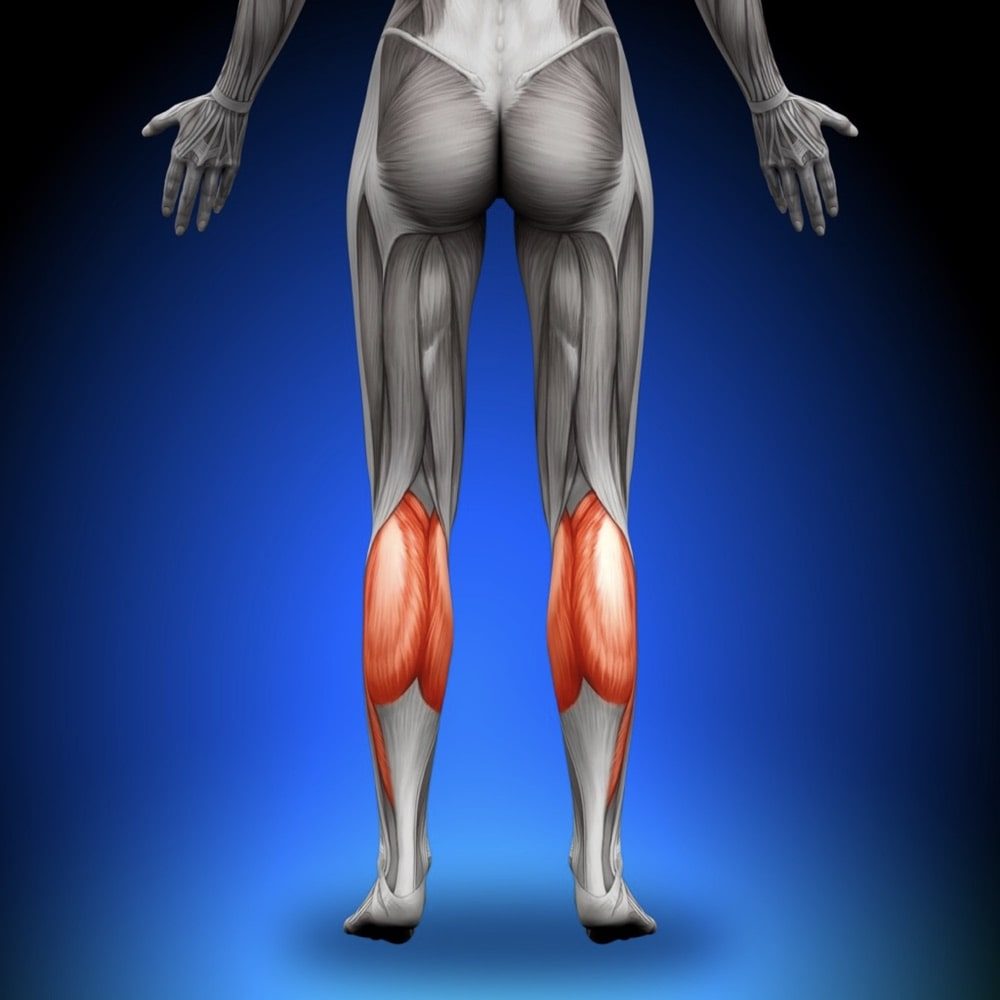

Comments